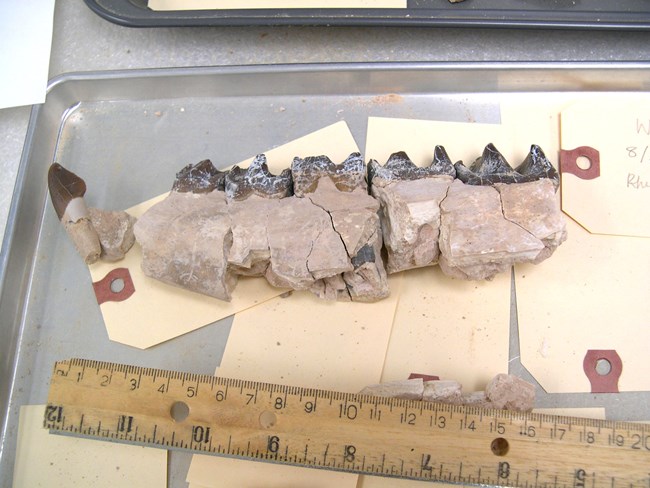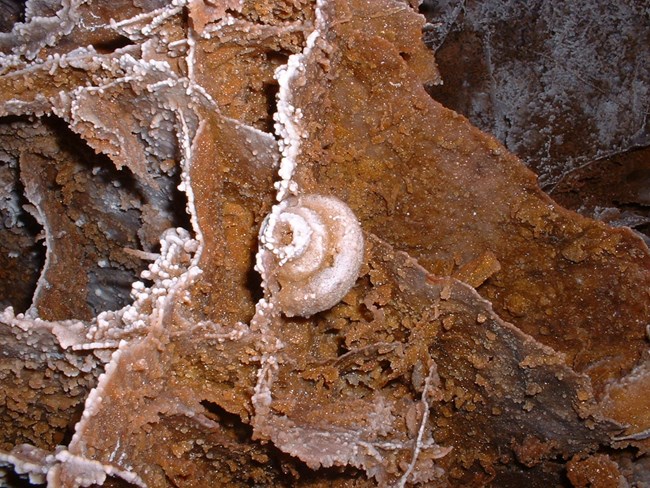|
The process by which we go from a piece of rock to a vivid picture of ancient life and environments is a science called paleontology. Paleontologists study ancient animals, plants, climates, and even geology to piece together pictures of environments unlike any you can experience on Earth today. Most of this is done studying evidence of an organism or its activity that have been preserved in rock, called a fossil. Paleontology In the Park
NPS photo Persistence CaveIn 2004, Marc Ohms, a physical scientist at Wind Cave National Park, found Persistence Cave which searching for another cave entrance. It was not until 2013, however, that Persistence Cave was tested as a paleontological site. To date, hundreds of bones have been found, cataloging 22 species dating back over 11,000 years. This puts Persistence Cave's window into a time called the Pleistocene Epoch of the Quaternary Period. 
NPS photo Centennial SiteIn 2003, Wind Cave National Park's 100th annivesary, excavation began at a place called the Centennial Site. These fossils date to the Oligocene epoch of the Paleogene period and are about 30 million years old. 
NPS photo Paha Sapa LimestoneThe very rock that formed Wind Cave carries evidence of another ancient environment, this one far older and more exotic than those described above. This rock was laid down in a tropical ocean covering most of North America around 350 million years ago, in a period called the Mississippian. These fossils are older than mammals, older than dinosaurs, and even older than flowers.This ocean was inhabited by strange animals only found in deep seas today. Shelled creatures called brachiopods formed beds on the ocean bottoms. Though they look similar to today's clams and scallops, they have no relation to these organisms. Likewise, the corals of this time--called rugose corals--are not more than superficially similar to those of modern seas. Crinoids--or sea lilies--made up gardens on the sea floor, filtering plankton out of the water. You can experience small windows into this world at the park. Close observation reveals brachiopod and rugose coral fossils along several of Wind Cave's tour routes. |
Last updated: September 3, 2023
